| Listing 1 - 10 of 16 | << page >> |
Sort by
|

ISBN: 0821825534 Year: 1993 Publisher: Providence, R.I. American Mathematical Society
Abstract | Keywords | Export | Availability | Bookmark
 Loading...
Loading...Choose an application
- Reference Manager
- EndNote
- RefWorks (Direct export to RefWorks)
Differential geometry. Global analysis --- Diffeomorphisms --- Hyperbolic spaces --- Manifolds (Mathematics) --- Geometry, Differential --- Topology --- Hyperbolic complex manifolds --- Manifolds, Hyperbolic complex --- Spaces, Hyperbolic --- Geometry, Non-Euclidean --- Differential topology --- Diffeomorphisms. --- Difféomorphismes. --- Hyperbolic spaces. --- Espaces hyperboliques.
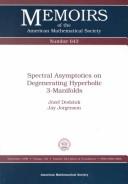
ISSN: 00659266 ISBN: 0821808370 Year: 1998 Publisher: Providence, R.I. American Mathematical Society
Abstract | Keywords | Export | Availability | Bookmark
 Loading...
Loading...Choose an application
- Reference Manager
- EndNote
- RefWorks (Direct export to RefWorks)
Geometry --- Geometry, Hyperbolic. --- Géométrie hyperbolique. --- Hyperbolic spaces. --- Espaces hyperboliques. --- Spectral theory (Mathematics) --- Théorie spectrale (mathématiques) --- Asymptotic expansions. --- Développements asymptotiques. --- Asymptotic expansions --- Geometry, Hyperbolic --- Hyperbolic spaces --- Functional analysis --- Hilbert space --- Measure theory --- Transformations (Mathematics) --- Hyperbolic complex manifolds --- Manifolds, Hyperbolic complex --- Spaces, Hyperbolic --- Geometry, Non-Euclidean --- Hyperbolic geometry --- Lobachevski geometry --- Lobatschevski geometry --- Asymptotic developments --- Asymptotes --- Convergence --- Difference equations --- Divergent series --- Functions --- Numerical analysis
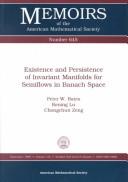
ISSN: 00659266 ISBN: 0821808680 Year: 1998 Publisher: Providence, R.I. American Mathematical Society
Abstract | Keywords | Export | Availability | Bookmark
 Loading...
Loading...Choose an application
- Reference Manager
- EndNote
- RefWorks (Direct export to RefWorks)
Operator theory --- Differentiable dynamical systems --- Flows (Differentiable dynamical systems) --- Hyperbolic spaces --- Invariant manifolds --- Invariants --- Manifolds (Mathematics) --- Hyperbolic complex manifolds --- Manifolds, Hyperbolic complex --- Spaces, Hyperbolic --- Geometry, Non-Euclidean --- Differential dynamical systems --- Dynamical systems, Differentiable --- Dynamics, Differentiable --- Differential equations --- Global analysis (Mathematics) --- Topological dynamics --- Differentiable dynamical systems. --- Systèmes dynamiques. --- Hyperbolic spaces. --- Espaces hyperboliques. --- Invariant manifolds. --- Variétés invariantes. --- Flows (Differentiable dynamical systems).
Book
ISBN: 3319323148 3319323156 Year: 2016 Publisher: Cham : Springer International Publishing : Imprint: Springer,
Abstract | Keywords | Export | Availability | Bookmark
 Loading...
Loading...Choose an application
- Reference Manager
- EndNote
- RefWorks (Direct export to RefWorks)
This book presents recent advances on Kobayashi hyperbolicity in complex geometry, especially in connection with projective hypersurfaces. This is a very active field, not least because of the fascinating relations with complex algebraic and arithmetic geometry. Foundational works of Serge Lang and Paul A. Vojta, among others, resulted in precise conjectures regarding the interplay of these research fields (e.g. existence of Zariski dense entire curves should correspond to the (potential) density of rational points). Perhaps one of the conjectures which generated most activity in Kobayashi hyperbolicity theory is the one formed by Kobayashi himself in 1970 which predicts that a very general projective hypersurface of degree large enough does not contain any (non-constant) entire curves. Since the seminal work of Green and Griffiths in 1979, later refined by J.-P. Demailly, J. Noguchi, Y.-T. Siu and others, it became clear that a possible general strategy to attack this problem was to look at particular algebraic differential equations (jet differentials) that every entire curve must satisfy. This has led to some several spectacular results. Describing the state of the art around this conjecture is the main goal of this work.
Mathematics. --- Algebraic geometry. --- Functions of complex variables. --- Differential geometry. --- Differential Geometry. --- Algebraic Geometry. --- Several Complex Variables and Analytic Spaces. --- Hyperbolic spaces. --- Hypersurfaces. --- Hyperbolic complex manifolds --- Manifolds, Hyperbolic complex --- Spaces, Hyperbolic --- Hyperspace --- Surfaces --- Geometry, Non-Euclidean --- Global differential geometry. --- Geometry, algebraic. --- Differential equations, partial. --- Partial differential equations --- Algebraic geometry --- Geometry --- Geometry, Differential --- Complex variables --- Elliptic functions --- Functions of real variables --- Differential geometry
Book
ISBN: 9781470436148 1470436140 Year: 2019 Publisher: Providence, RI : American Mathematical Society,
Abstract | Keywords | Export | Availability | Bookmark
 Loading...
Loading...Choose an application
- Reference Manager
- EndNote
- RefWorks (Direct export to RefWorks)
Automorphisms. --- Low-dimensional topology. --- Automorphismes. --- Topologie de basse dimension. --- Free groups. --- Isometrics (Mathematics) --- Hyperbolic spaces. --- Groupes libres --- Automorphismes --- Isométrie (Mathématiques) --- Espaces hyperboliques --- Free groups --- Automorphisms --- Group theory --- Hyperbolic spaces --- Transformations (Mathematics) --- Hyperbolic complex manifolds --- Manifolds, Hyperbolic complex --- Spaces, Hyperbolic --- Geometry, Non-Euclidean --- Groups, Theory of --- Substitutions (Mathematics) --- Algebra --- Symmetry (Mathematics)
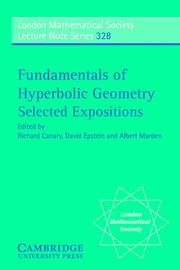

ISBN: 9781139106986 9780521615587 9781139126939 1139126938 1139106988 0521615585 1107142253 9781107142251 1283295512 9781283295512 1139122010 9781139122016 9786613295514 6613295515 1139116274 9781139116275 1139111914 9781139111911 1139114107 9781139114103 Year: 2006 Volume: 328 Publisher: Cambridge, UK New York Cambridge University Press
Abstract | Keywords | Export | Availability | Bookmark
 Loading...
Loading...Choose an application
- Reference Manager
- EndNote
- RefWorks (Direct export to RefWorks)
Presents reissued articles from two classic sources on hyperbolic manifolds. Part I is an exposition of Chapters 8 and 9 of Thurston's pioneering Princeton Notes; there is a new introduction describing recent advances, with an up-to-date bibliography, giving a contemporary context in which the work can be set. Part II expounds the theory of convex hull boundaries and their bending laminations. A new appendix describes recent work. Part III is Thurston's famous paper that presents the notion of earthquakes in hyperbolic geometry and proves the earthquake theorem. The final part introduces the theory of measures on the limit set, drawing attention to related ergodic theory and the exponent of convergence. The book will be welcomed by graduate students and professional mathematicians who want a rigorous introduction to some basic tools essential for the modern theory of hyperbolic manifolds.
Geometry, Hyperbolic --- Hyperbolic spaces --- Three-manifolds (Topology) --- Kleinian groups --- Groups, Kleinian --- Discontinuous groups --- 3-manifolds (Topology) --- Manifolds, Three dimensional (Topology) --- Three-dimensional manifolds (Topology) --- Low-dimensional topology --- Topological manifolds --- Hyperbolic complex manifolds --- Manifolds, Hyperbolic complex --- Spaces, Hyperbolic --- Geometry, Non-Euclidean --- Hyperbolic geometry --- Lobachevski geometry --- Lobatschevski geometry
Book
ISBN: 1316667081 1316667235 1316667383 1316667537 1316667987 1316341062 1316666182 9781316341063 9781107541481 1107541484 9781316667989 9781316667088 9781316667231 9781316667385 9781316667538 Year: 2016 Publisher: Cambridge
Abstract | Keywords | Export | Availability | Bookmark
 Loading...
Loading...Choose an application
- Reference Manager
- EndNote
- RefWorks (Direct export to RefWorks)
This comprehensive monograph is ideal for established researchers in the field and also graduate students who wish to learn more about the subject. The text is made accessible to a broad audience as it does not require any knowledge of Lie groups and only a limited knowledge of differential geometry. The author's primary emphasis is on potential theory on the hyperbolic ball, but many other relevant results for the hyperbolic upper half-space are included both in the text and in the end-of-chapter exercises. These exercises expand on the topics covered in the chapter and involve routine computations and inequalities not included in the text. The book also includes some open problems, which may be a source for potential research projects.
Harmonic functions. --- Subharmonic functions. --- Hyperbolic spaces. --- Hyperbolic complex manifolds --- Manifolds, Hyperbolic complex --- Spaces, Hyperbolic --- Geometry, Non-Euclidean --- Functions, Subharmonic --- Functions of real variables --- Potential theory (Mathematics) --- Functions, Harmonic --- Laplace's equations --- Bessel functions --- Differential equations, Partial --- Fourier series --- Harmonic analysis --- Lamé's functions --- Spherical harmonics --- Toroidal harmonics
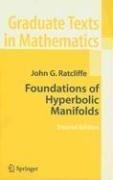
ISBN: 038747322X 0387331972 1441922024 9780387331973 Year: 2006 Publisher: New York, NY : Springer New York : Imprint: Springer,
Abstract | Keywords | Export | Availability | Bookmark
 Loading...
Loading...Choose an application
- Reference Manager
- EndNote
- RefWorks (Direct export to RefWorks)
This book is an exposition of the theoretical foundations of hyperbolic manifolds. It is intended to be used both as a textbook and as a reference. The book is divided into three parts. The first part is concerned with hyperbolic geometry and discrete groups. The main results are the characterization of hyperbolic reflection groups and Euclidean crystallographic groups. The second part is devoted to the theory of hyperbolic manifolds. The main results are Mostow’s rigidity theorem and the determination of the global geometry of hyperbolic manifolds of finite volume. The third part integrates the first two parts in a development of the theory of hyperbolic orbifolds. The main result is Poincare«s fundamental polyhedron theorem. The exposition if at the level of a second year graduate student with particular emphasis placed on readability and completeness of argument. After reading this book, the reader will have the necessary background to study the current research on hyperbolic manifolds. The second edition is a thorough revision of the first edition that embodies hundreds of changes, corrections, and additions, including over sixty new lemmas, theorems, and corollaries. The new main results are Schl¬afli’s differential formula and the $n$-dimensional Gauss-Bonnet theorem. John G. Ratcliffe is a Professor of Mathematics at Vanderbilt University.
Geometry, Hyperbolic. --- Hyperbolic spaces. --- Hyperbolic complex manifolds --- Manifolds, Hyperbolic complex --- Spaces, Hyperbolic --- Geometry, Non-Euclidean --- Hyperbolic geometry --- Lobachevski geometry --- Lobatschevski geometry --- Geometry, Hyperbolic --- Hyperbolic spaces --- 514.1 --- 514 --- 514.1 General geometry --- General geometry --- 514 Geometry --- Geometry --- Geometry. --- Topology. --- Geometry, algebraic. --- Algebraic Geometry. --- Algebraic geometry --- Analysis situs --- Position analysis --- Rubber-sheet geometry --- Polyhedra --- Set theory --- Algebras, Linear --- Mathematics --- Euclid's Elements --- Algebraic geometry. --- Geometry, Algebraic.
Book
ISBN: 3642442048 3642366627 3642366635 Year: 2013 Publisher: Berlin ; Heidelberg : Springer,
Abstract | Keywords | Export | Availability | Bookmark
 Loading...
Loading...Choose an application
- Reference Manager
- EndNote
- RefWorks (Direct export to RefWorks)
Hyperbolic geometry is an essential part of theoretical astrophysics and cosmology. Besides specialists of these domains, many specialists of new domains start to show a growing interest both to hyperbolic geometry and to cellular automata. This is especially the case in biology and computer science. This book gives the reader a deep and efficient introduction to an algorithmic approach to hyperbolic geometry. It focuses the attention on the possibilities to obtain in this frame the power of computing everything a computer can compute, that is to say: universality. The minimal ways to get universality are invistigated in a large family of tilings of the hyperbolic plane. In several cases the best results are obtained.In all cases, the results are close to the theoretical best values. This gives rise to fantastic illustrations: the results are jewels in all meanings of the word. ------------------------ Maurice MARGENSTERN is professor emeritus at the University of Lorraine, he is a member of LITA, the research unit of computer science in the campus of Metz of this university. Professor Margenstern is amongst top world experts in theory of computation, mathematical machines and geometry. He is a pioneer in cellular automata in hyperbolic spaces.
Engineering & Applied Sciences --- Computer Science --- Hyperbolic spaces. --- Geometry, Hyperbolic. --- Cellular automata. --- Computers, Iterative circuit --- Iterative circuit computers --- Structures, Tessellation (Automata) --- Tessellation structures (Automata) --- Hyperbolic geometry --- Lobachevski geometry --- Lobatschevski geometry --- Hyperbolic complex manifolds --- Manifolds, Hyperbolic complex --- Spaces, Hyperbolic --- Engineering. --- System theory. --- Complexity, Computational. --- Complexity. --- Complex Systems. --- Parallel processing (Electronic computers) --- Pattern recognition systems --- Sequential machine theory --- Geometry, Non-Euclidean --- Construction --- Industrial arts --- Technology --- Computational complexity. --- Systems, Theory of --- Systems science --- Science --- Complexity, Computational --- Electronic data processing --- Machine theory --- Philosophy
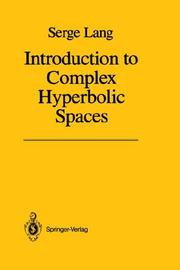
ISBN: 0387964479 1441930825 1475719450 Year: 1987 Publisher: New York Springer
Abstract | Keywords | Export | Availability | Bookmark
 Loading...
Loading...Choose an application
- Reference Manager
- EndNote
- RefWorks (Direct export to RefWorks)
514.13 --- Functions of several complex variables --- Geometry, Differential --- Hyperbolic spaces --- Nevanlinna theory --- Functions, Meromorphic --- Value distribution theory --- Hyperbolic complex manifolds --- Manifolds, Hyperbolic complex --- Spaces, Hyperbolic --- Geometry, Non-Euclidean --- Differential geometry --- Complex variables --- Several complex variables, Functions of --- Functions of complex variables --- Non-Euclidean metric geometries. Lobachevsky geometry. Other hyperbolic geometries. Elliptic geometries --- 514.13 Non-Euclidean metric geometries. Lobachevsky geometry. Other hyperbolic geometries. Elliptic geometries
| Listing 1 - 10 of 16 | << page >> |
Sort by
|

 Search
Search Feedback
Feedback About UniCat
About UniCat  Help
Help News
News